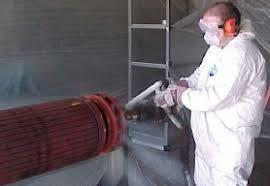The New Way to Clean: Why Dry Ice Blasting Is Taking Over
Cleaning is a task everyone knows, but the methods we use keep improving. For decades, people have relied on water, chemicals, and scrubbing to clean machines and surfaces. However, these methods can be slow, damaging, or messy. Now, a new technique called dry ice blasting is quickly becoming a favorite because it cleans better, faster, and without causing damage.
What Is Dry Ice Blasting?
Dry ice blasting uses solid carbon dioxide, or dry ice, in the form of tiny pellets to clean surfaces. These pellets are extremely cold and are shot at a surface at high speed by a special machine. When the pellets hit dirt, paint, grease, or other unwanted material, they break it apart and lift it off without harming the surface.
This method doesn’t use water or harsh chemicals, so there’s no mess or leftover waste to clean up.
How Does Dry Ice Blasting Work?
The secret behind dry ice blasting lies in three effects:
- Forceful Impact: The pellets hit the surface hard enough to knock loose dirt or coatings.
- Extreme Cold: The pellets freeze the dirt or paint, causing it to become brittle and crack.
- Sublimation: Dry ice changes directly from solid to gas, expanding quickly and pushing dirt away from the surface.
This means after blasting, all that’s left is the removed dirt — no water, chemicals, or grit to clean up.
Benefits of Dry Ice Blasting
Dry ice blasting offers many advantages over traditional cleaning:
- Safe for Delicate Surfaces: It won’t scratch or damage wood, plastic, metal, or electronics.
- No Chemical Use: Avoids dangerous chemicals that can harm people and the environment.
- No Water Damage: Ideal for areas where water could cause problems.
- Fast Cleaning: Speeds up cleaning tasks, reducing downtime.
- Eco-Friendly: Uses recycled carbon dioxide and produces no secondary waste.
Where Is Dry Ice Blasting Used?
Industries that benefit from dry ice blasting include:
- Food Processing: Cleaning equipment without chemicals keeps food safe.
- Automotive Repair: Removing paint and grease safely.
- Electronics Manufacturing: Cleaning sensitive parts without water damage.
- Historic Preservation: Restoring old buildings and artifacts without harm.
- Industrial Maintenance: Keeping machinery and molds clean and efficient.
Safety Tips
Operators should wear protective gear like gloves and goggles since dry ice is extremely cold. Good ventilation is important to prevent buildup of carbon dioxide gas during blasting.
Conclusion
Dry ice blasting is changing the cleaning world by providing a faster, safer, and cleaner way to remove dirt and contaminants. Whether it’s in a factory, workshop, or restoration project, this method offers a smart alternative to water, chemicals, and abrasive cleaning.
If you want efficient cleaning without damage or mess, dry ice blasting is a technology worth exploring.

